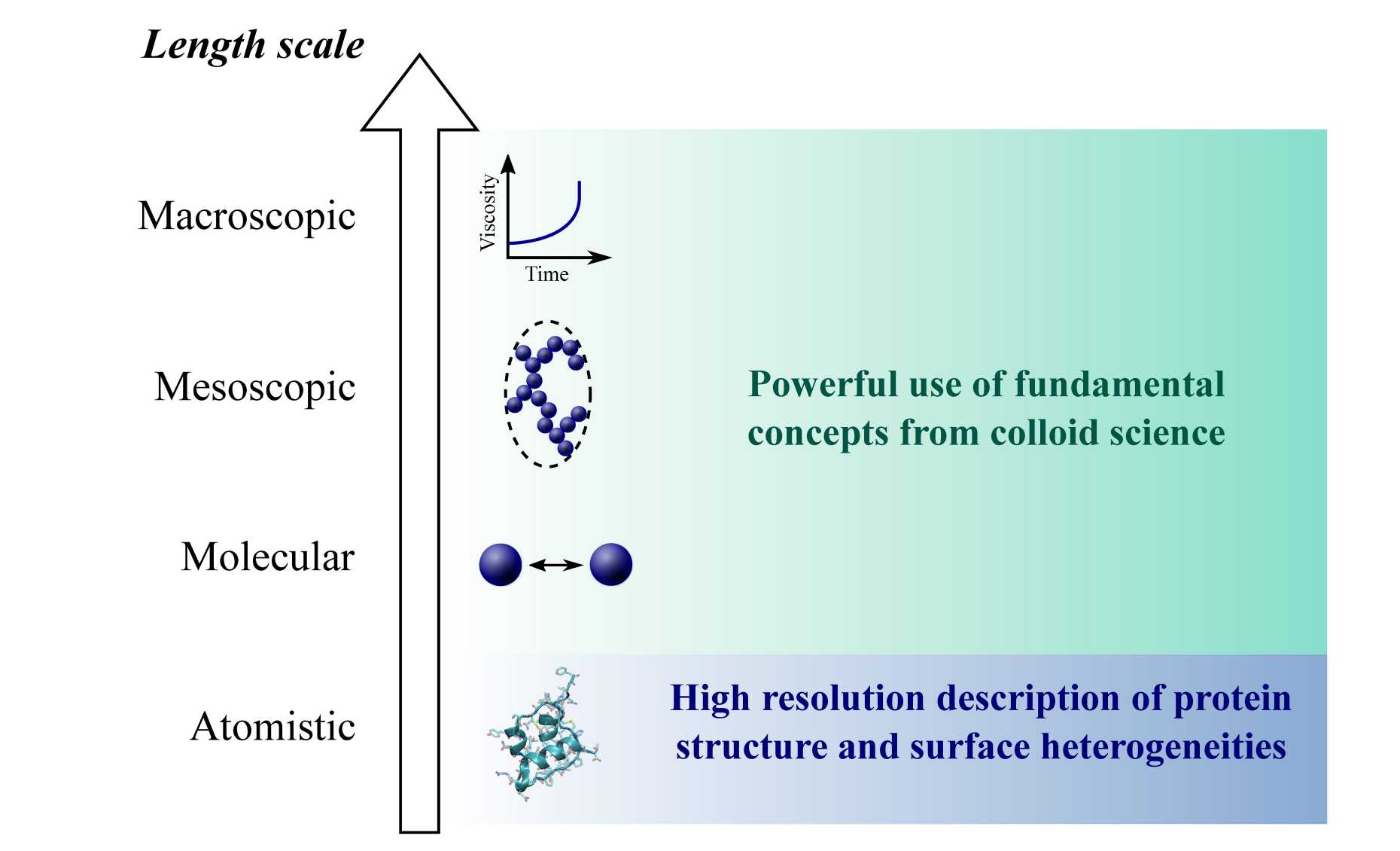Aggregation of therapeutic proteins from dilute to concentrated conditions
Context
Protein-based drugs are widely used in the treatment of numerous human diseases including diabetes, rheumatoid arthritis and cancer. However, proteins are prone to aggregate, and it is thus challenging to guarantee protein stability during manufacturing and long-term storage. Since the presence of protein aggregates may reduce drug efficacy or trigger unwanted immunogenicity, the protein aggregate content must be strictly controlled to ensure satisfactory product quality.
Objectives
Although major advances have been made in the last decades, a comprehensive knowledge of protein aggregation is still lacking and aggregation inhibition is mainly achieved by product-specific optimization. The goal of this project is to gain a solid understanding on the thermodynamics and kinetics of protein aggregation with a view to developing rational strategies seeking to enhance protein stability. We are particularly interested in unravelling the complex aggregation phenomena occurring under concentrated conditions since protein-based drugs are generally formulated at high protein concentration.
Methodology
In this project, we combine experimental data (which are mainly acquired with size exclusion chromatography and light scattering techniques), and simulations from kinetic models. We borrow key concepts developed in the frame of colloid science to gain fundamental knowledge on protein aggregation mechanisms. Indeed, although protein solutions are molecular mixtures (as compared to colloids which are two component systems), proteins are sufficiently large as compared to the solvent molecules so that they can be treated as colloidal dispersions. We analyze the aggregation process from a multi-scale perspective, as illustrated in Figure 1. At the molecular level, we describe protein-protein interactions by using coarse-grained molecular potentials. Then, we study the formation of fractal aggregates at the mesoscopic scale. Finally, we investigate the impact of aggregate formation on the solution macroscopic properties, such as the solution viscosity.
Contact Person: Lucrèce Nicoud
